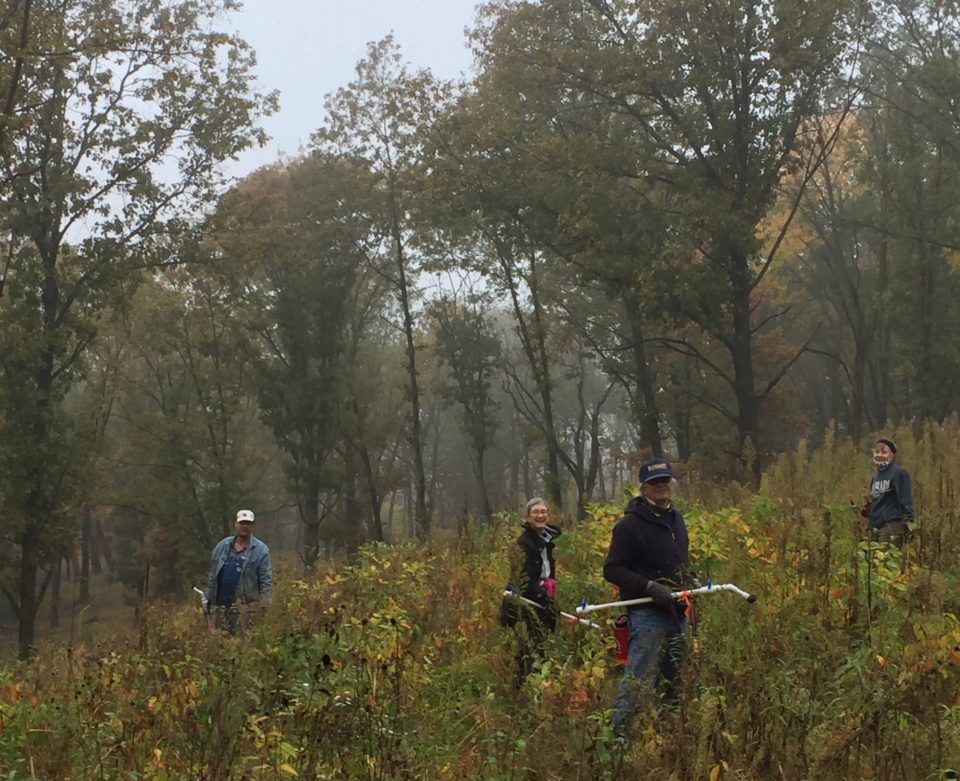We hope you enjoy this article from Camp volunteer Christine Guth:
When I volunteer at Friedenswald, you’ll usually find me, loppers in hand, removing invasive plants. A love of plants is what first brought me to care about invasive species. In rambling through wild lands, it didn’t take me long to observe that some natural areas are bursting with plant diversity, and others have a monotonous sameness. As I learned to identify plants around me, I realized that a lot of the monotony is due to a small number of species introduced from Asia and Europe that like to take over and crowd out native plants. The wild places I knew as a child some sixty years ago are being increasingly invaded by thickets of invasive species. As I would visit public wild lands, I found myself just itching to get my hands on and tear out these invasives to give the natives a chance to thrive. My growing passion has found a happy outlet in Friedenswald’s land management efforts.
I usually come away from a morning’s work on invasive removal exhausted, covered in sweat, dirt, and sometimes even blood. Why do I put myself through all this? Because the irritations pale when compared to the tremendous satisfaction I have of looking back at the day’s efforts: a fascinating community of native plants at home in a beautiful landscape, and the adjacent piles of invasive plant species we’ve just cleared out.
If you’re not aware of how much invasive plants have come to dominate our wildlands, here’s a simple test. In the late fall after most of the tree leaves have fallen, look around in a wooded area near your home for what is still green. Chances are, you will be surrounded by invasive shrubs, still holding on to their green leaves, shrubs such as bush honeysuckle, autumn olive, privet, and multiflora rose. Each one of these takes up space and resources while contributing little or nothing to the food webs and health of the surrounding ecosystem. No insects recognize them as food, so the birds and animals that eat insects will abandon the area for better places to forage. Without insect predators to control their growth, invasive plants have an unfair advantage and crowd out natives, which have to contend with being eaten. Birds do eat the invasives’ fruits and spread the seeds far and wide, but their berries are bird junk food, containing little nutrition.
I want birds visiting Friedenswald to have a rich diet of the caterpillars that feed on native plants, so they will stay longer and give us all a glimpse of their beauty. I want the camp’s human visitors to have a chance to see what the natural world looks like with its’ balance intact and biodiversity thriving. For these reasons and more, I look forward eagerly to the next chance to pick up my loppers and care for the expression of God’s spirit that is Camp Friedenswald.
-Christine Guth
You are invited! (A note from Amy at Camp Friedenswald)

Camp Friedenswald is home to a variety of ecosystems, including rare fen, oak savanna, prairie, and old growth forest. Caring for these natural communities is especially important as part of a larger effort to protect biodiversity in the southwest Michigan area, with one federally endangered species and a number of threatened species present on Camp property. A morning spent in the peaceful woods is sure to be meaningful, and will result in new human friends too, as we build community alongside each other. When you are done, you are welcome to stay and eat a delicious lunch provided by Camp. Current work days are Thursday mornings, 9:30am-12:30pm from September 30 through October 28th. If you’d like to come lend a hand, give us a call or email amy@friedenswald.org for more information.